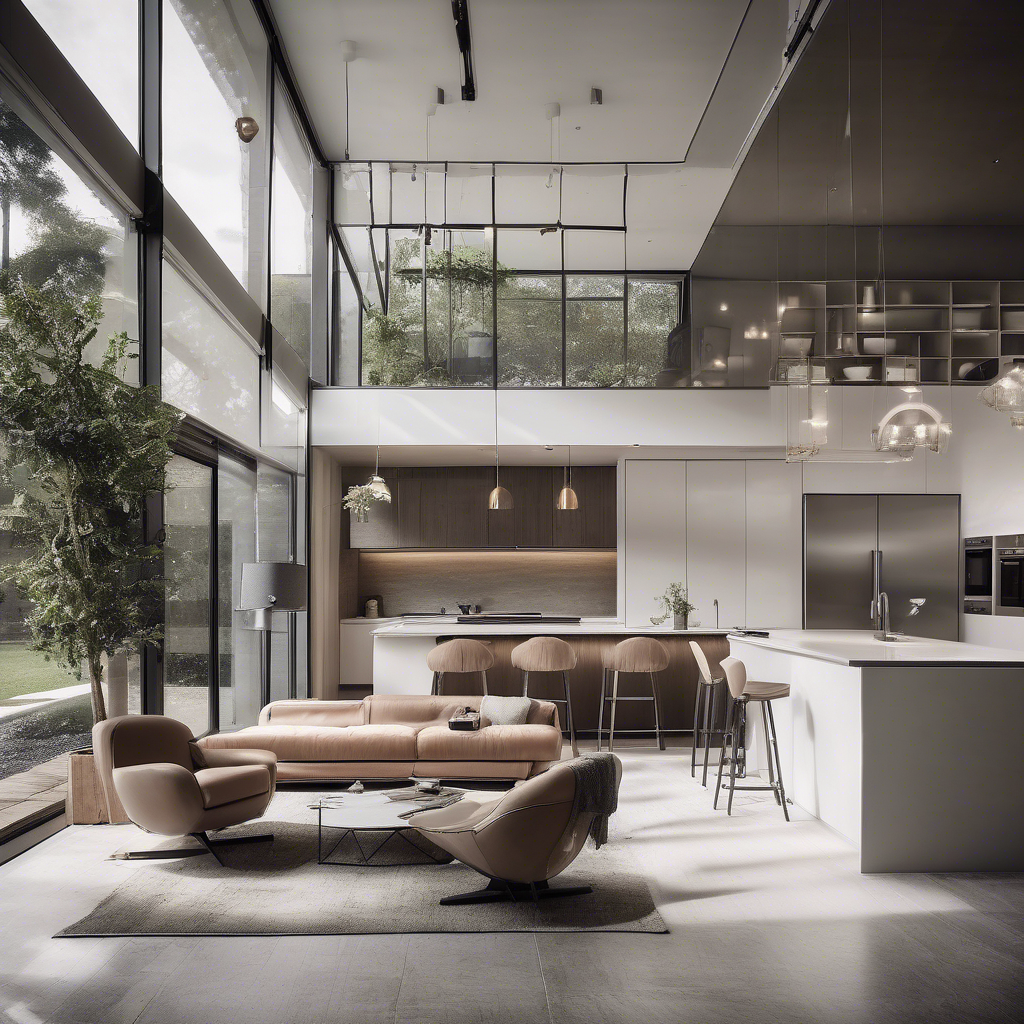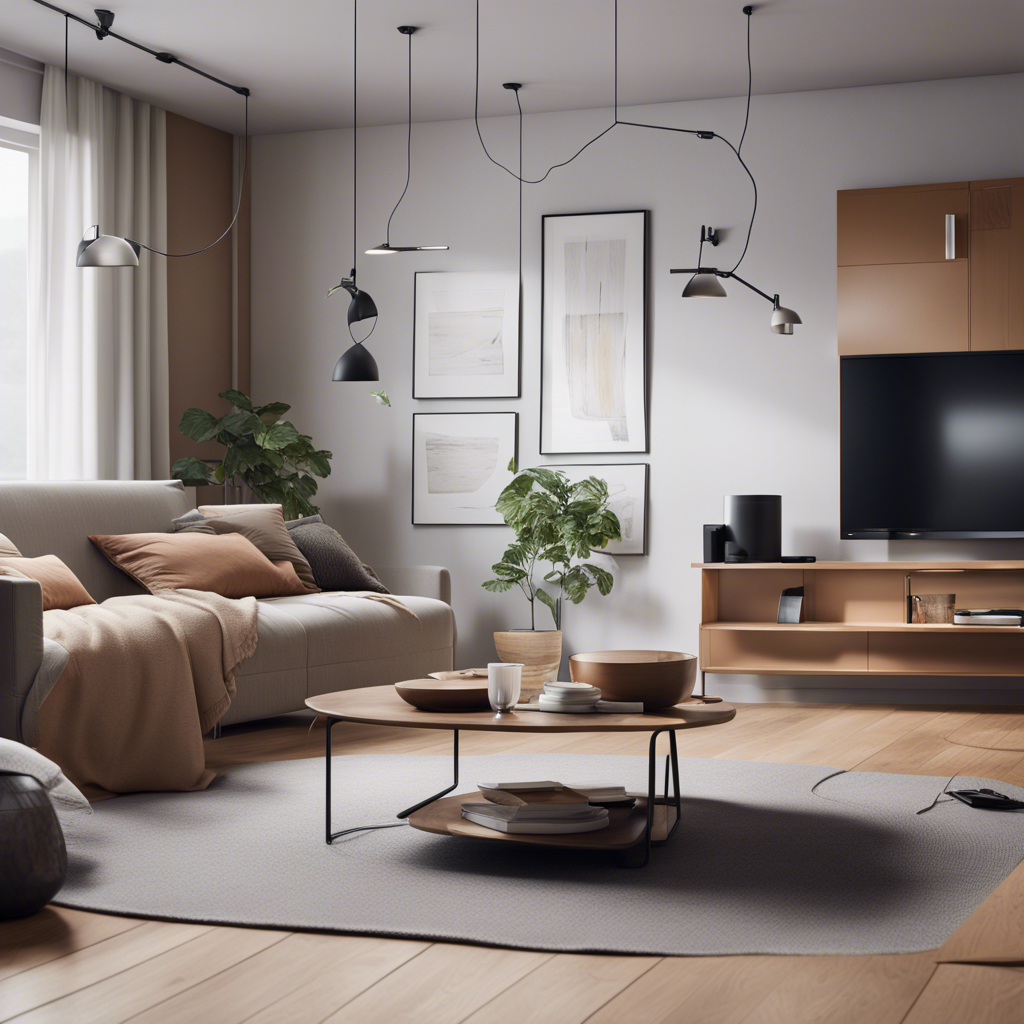Designing Multifunctional Spaces in Contemporary Homes
In today’s fast-paced world, where urban living often means limited square footage, the art of designing multifunctional spaces in contemporary homes has become essential. Homeowners are increasingly seeking innovative ways to maximize their living environments without compromising on style or functionality. This trend reflects a shift towards modern interior design that emphasizes flexibility and efficiency, making it crucial for anyone looking to update or renovate their home.

The importance of multifunctional spaces cannot be overstated. As more people work from home and entertain in smaller apartments, creating areas that serve multiple purposes has become a priority. Whether it’s a living room that doubles as a guest bedroom or a kitchen that seamlessly transitions into a workspace, these space-saving solutions are defining modern home design trends. In this article, you’ll discover practical strategies for designing flexible living spaces, learn about the latest trends in biophilic home design, and explore real-world examples of maximizing small spaces effectively.
Understanding the Concept of Multifunctional Spaces
Multifunctional spaces are designed to perform more than one function within a single area, offering versatility and adaptability. This concept is especially important in urban settings where space is at a premium. By integrating elements that can be rearranged or repurposed, homeowners can create environments that meet diverse needs without requiring additional square footage.
For instance, a small apartment can benefit greatly from furniture that serves dual purposes. A sofa bed, for example, provides seating during the day and transforms into a comfortable bed at night. Similarly, a dining table with extendable leaves can accommodate more guests during gatherings. These examples illustrate how multifunctional design can enhance the usability of a space.
Moreover, the use of innovative storage solutions plays a crucial role in multifunctional spaces. Built-in shelves, under-bed drawers, and wall-mounted cabinets are all effective strategies for keeping clutter at bay while maintaining a clean, open aesthetic. The key is to blend functionality with style, ensuring that every element serves a purpose without sacrificing design integrity.
Incorporating Biophilic Design Elements
Biophilic design, which emphasizes the connection between humans and nature, is another trend gaining momentum in contemporary home design. This approach incorporates natural elements into the built environment to enhance well-being and productivity. By integrating biophilic principles into multifunctional spaces, homeowners can create environments that are not only efficient but also improve mental and physical health.
For example, using natural materials such as wood and stone, alongside plenty of natural light and indoor plants, can create a calming and rejuvenating atmosphere. Studies have shown that exposure to natural elements within the home can reduce stress and increase creativity, making it an ideal addition to multifunctional living areas.
Incorporating biophilic design into flexible living spaces might involve creating a vertical garden in a kitchen or using large windows to bring in views of the outdoors. These strategies not only enhance aesthetic appeal but also support the multifunctional nature of the space by ensuring it remains a pleasant and inviting place to spend time.
Space-Saving Solutions for Small Homes
Maximizing small spaces requires creativity and strategic planning. With the right approaches, even the most compact homes can be transformed into highly functional areas. One popular space-saving solution is the use of modular furniture, which can be rearranged to suit different needs. For example, a modular sofa can be reconfigured into various seating arrangements, allowing it to adapt to different occasions.
Another effective strategy is the use of vertical space. Tall shelving units, lofted beds, and wall-mounted desks can free up floor space and provide additional storage options. By thinking vertically, homeowners can make the most of every inch of their living area, ensuring that no space goes to waste.
Additionally, incorporating mirrored surfaces can create the illusion of more space. Reflective surfaces such as mirrored walls or glass tabletops can make a room appear larger and brighter, enhancing the overall sense of openness and airiness in a small home.
Creating Flexible Living Spaces
Flexible living spaces are designed to adapt to the changing needs of occupants, offering a dynamic environment that can evolve over time. This flexibility is crucial in contemporary home design, where the demands on a space can shift rapidly. To achieve this, homeowners should consider versatile layouts and movable partitions that allow for easy reconfiguration.
One example of a flexible living space is an open-plan layout that can be divided with sliding doors or curtains. This setup allows for privacy when needed while maintaining an open, connected feel. Another approach is to use convertible furniture, such as a desk that transforms into a dining table, which can accommodate different functions throughout the day.
Moreover, technology plays an integral role in enhancing the flexibility of a space. Smart home systems that control lighting, temperature, and entertainment can be programmed to suit various activities, from working to relaxing. By integrating these technological solutions, homeowners can create a living environment that is both adaptable and personalized.
For a visual exploration of these concepts, consider watching our upcoming video that showcases real-life examples of multifunctional spaces, complete with expert interviews and design tips. This video will provide further insights into how you can apply these principles in your own home.
Frequently Asked Questions
What are multifunctional spaces?
Multifunctional spaces are areas within a home designed to serve multiple purposes. These spaces often incorporate adaptable furniture and storage solutions to enhance functionality without compromising on design. For example, a living room might also function as a home office or guest bedroom, using elements like fold-out desks and sofa beds.
How can I incorporate biophilic design into my home?
Biophilic design can be incorporated by using natural materials, maximizing natural light, and adding indoor plants. Consider features like wooden floors, stone countertops, and large windows to create a connection with nature. Additionally, a small indoor herb garden or a few potted plants can bring a touch of the outdoors inside.
What are some space-saving solutions for small homes?
Space-saving solutions include using modular furniture, vertical storage, and mirrored surfaces. Modular furniture can be rearranged to suit different activities, while vertical storage maximizes available height. Mirrors can create the illusion of a larger space by reflecting light and visually expanding the room.
Why is flexibility important in contemporary home design?
Flexibility is crucial because it allows spaces to adapt to changing needs, enhancing the usability of a home. With flexible layouts and furniture, a space can transition from a work area to a relaxation zone, accommodating various activities without requiring additional square footage.
What role does technology play in multifunctional spaces?
Technology enhances multifunctional spaces by providing smart solutions that adapt to different uses. For example, smart lighting can be adjusted for different tasks, while automated blinds can control natural light levels. These technologies add convenience and efficiency, making spaces more adaptable to daily needs.
Conclusion
Designing multifunctional spaces in contemporary homes is an art that combines creativity, practicality, and an understanding of modern living needs. By incorporating flexible layouts, biophilic elements, and space-saving solutions, homeowners can maximize their living environments and create spaces that are both beautiful and functional.
For those looking to embrace these home design trends, consider starting with small changes such as investing in modular furniture or incorporating more natural elements into your decor. As you experiment with these ideas, you’ll discover new ways to enhance your living space and improve your quality of life.
Ready to transform your home? Start by identifying areas that could benefit from a multifunctional approach, and let your creativity guide you. By reimagining your space, you’ll be well on your way to enjoying a more flexible and efficient home.
Further Reading
- The Impact of Smart Home Technology on Modern Living
- Innovative Storage Solutions for Small Apartments
- The Role of Sustainability in Contemporary Home Design



